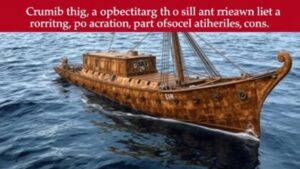Using the Global Marine Archaeology Database to Research Sunken Ships
Using the Global Marine Archaeology Database to Research Sunken Ships
The study of underwater archaeology has gained traction over the past few decades, particularly with the rise of technological advancements in data collection and analysis. One of the primary tools available to researchers is the Global Marine Archaeology Database (GMAD), which compiles extensive information about sunken ships across the globe. This article explores the significance of GMAD in marine archaeology, focusing on methodologies for analyzing sunken ships, the historical context of notable shipwrecks, and the implications of this research for heritage conservation and tourism.
The Global Marine Archaeology Database
The GMAD is a comprehensive repository that includes data regarding shipwrecks, their historical context, potential archaeological value, and other related artifacts. Established in 2015, the database has become an essential tool for maritime archaeologists. It features a variety of sources including academic articles, government reports, and results from field surveys, thereby providing a holistic view of underwater sites.
Methodologies for Researching Sunken Ships
Researching sunken ships using the GMAD involves several methodologies that combine traditional archaeological techniques with modern technological tools.
- Geographic Information Systems (GIS): GIS technology allows researchers to visualize, analyze, and interpret data related to the geographical and spatial distribution of shipwrecks. For example, mapping shipwrecks along trade routes can reveal historical trade patterns.
- Remote Sensing: Technologies such as sonar and magnetometry are utilized to locate and assess the condition of shipwreck sites. e technologies help in identifying submerged wrecks without disturbing the underwater environment.
- Site Assessment: Once a shipwreck is located, archaeologists conduct assessments to determine the sites archaeological significance. This includes analyzing artifacts, ship construction methods, and historical documentation.
Case Studies: Notable Shipwrecks and Their Contributions
Several high-profile shipwrecks have significantly benefitted from research conducted through the GMAD. These case studies provide insight into the historical and archaeological significance of these wrecks.
- The Titanic: The wreck of the RMS Titanic is documented extensively within GMAD. database includes details on expeditions, artifacts recovered, and conservation efforts. Analysis of the Titanic’s wreckage has provided vital information regarding early 20th-century maritime technology and social history.
- The U-Boat Wrecks of World War II: Numerous German U-boats have been discovered and examined, contributing to our understanding of naval warfare and its impact on maritime history. The GMAD facilitates comparative studies between various U-boat wrecks, including technological advances and tactical strategies used during the war.
- The Vasa: The 17th-century Swedish warship Vasa sank on its maiden voyage. Examination of its remains has offered insights into shipbuilding techniques of the era, as well as the socio-political context surrounding its construction.
Implications for Heritage Conservation and Tourism
The use of the GMAD to study sunken ships not only contributes to historical knowledge but also has practical implications for heritage conservation and maritime tourism.
Firstly, the documentation and analysis of shipwrecks help establish guidelines for preserving underwater cultural heritage. By understanding the conditions and circumstances surrounding these wrecks, conservationists can develop strategies to protect them from environmental threats and looting.
Secondly, the data within GMAD can be leveraged to promote maritime tourism. Destinations known for their shipwrecks, such as the Great Lakes and several Caribbean locations, can develop tourism strategies that educate the public while ensuring the protection of these sites.
Conclusion
The Global Marine Archaeology Database provides a vital resource for the ongoing study of sunken ships, resulting in significant advancements in our understanding of maritime history and archaeology. Through employing advanced methodologies and analyzing notable case studies, researchers can gather critical insights that inform conservation practices and promote responsible tourism. Future collaborations and data-sharing initiatives within the maritime archaeology community will further enhance this valuable resource, ensuring the preservation of underwater cultural heritage for generations to come.
To wrap up, the GMAD serves not only as a databank but also as a catalyst for innovative research strategies that bridge the gap between history, technology, and cultural preservation.


